 Super Bowl is here again. It is the pinnacle of a long National Football league (NFL) season where the winning team will walk away with the most coveted trophy in American sports: the Vince Lombardi trophy. The winning team's players will receive their Super Bowl rings and the glory that accompanies winning the big game. To make it in the NFL, you must have a boatload of talent and willpower. Then to make it to the Super Bowl, you are the best of the best. That's why the game gets so much attention since it has a lot to teach us how to be the best in what we do and what it takes to win the ultimate prize of success. For us, our equivalent to playing in a "Super Bowl" is a job interview. To get an interview that can lead to getting a job and having a good career requires a lot of work. You need a good education, strong work experience, and marketable skills. When you do well in a job interview, you win a job, get a pay increase, and a path to a good career. To win a job interview, you have to be talented, experienced, adaptable, well-prepared, and poised. Interviews are highly stressful, and they should be since there is so much riding on them. Both you are the employer have to make a decision on making a big investment. And if it does not work out, it can be devastating for both. This makes interviews very high stakes and high opportunity. Football payers strive to have an opportunity to prove their worth in the Super Bowl. All NFL players are winners to be playing in the NFL. But they want more. They all have two goals: One, to get in the Super Bowl; second, win it. Is it just another game? Yes and No. The game does not change. But It is no ordinary game. It is the only game watched by over a hundred million people all around the world. People scrutinize every play on the field, every decision made by coaches, every call made by officials, every commercial aired on TV, and every song sung by the entertainment act during half time. Similarly, you have to prove your worth in a job interview. You are being judged on what you say and do during a job interview. You have to know what you are up against since there are no second chances. Your real competition is not another candidate but the interviewer. The other candidates can't affect your performance. It is how well you play the interview game against the interviewer to get you the win. You are probably saying at this point, hey, I thought I was just interviewing for a job, not taking it like I was playing in a so called "Super Bowl." Perhaps you should. Are you working hard to get an interview in the first place? And then, when you do get an interview, are you doing whatever it takes to get the job offer? If the answer to both is yes, then you have the same mindset of an NFL player. The stakes are very high for the Super Bowl as there is a lot of hype surrounding the game. For your job interviews, you have to raise the stakes. Unfortunately, many don't. I am amazed at how ill-prepared candidates often are for job interviews. People don't realize how much work is involved when you are interviewing for a job. Many have done more preparation for their SATs than they do for job interviews. You may get away with this for entry-level positions, but not if you want to get ahead in your career. Your competition will get much more difficult, and you can assume that they are all in it to win it. Most people can't give a well-thought answer to a simple question, "Tell me something about yourself?" Can you answer that question and score a "touchdown" in the opening question? If you do, your chances of winning the job go up quickly. It is a statement answer for the interviewer. He or she will know that you have not just shown up to play but are ready to stand out and secure an offer. Having a good career is not an accident, just like winning a Super Bowl is not an accident. Winning a Super Bowl means you worked harder, smarter, better than others both individually, as a team, and as an organization. And probably got some luck along the way too. Football players don't do it alone. They have had all kinds of coaches from young age to a professional career. You can do the same by having a support group, mentors, and coaches to succeed. Winning is a team sport, whether it's Super Bowl or job interviews. Stakes are very high; thus, rewards are very high. That means you must want it badly and willing to do just about anything to win. Now go plan, prepare, and play to win like the NFL players will do at this year's Super Bowl. You can be a winner and get to celebrate your getting a new job with your family and friends and then start planning for your next win. ##### 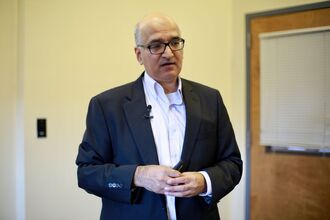 I am an author, speaker, career success coach. I guide people thrive on high stakes stage whether it's for a job interview, career advancement, a sales presentation or a high-stakes speech. I am the author of a practical book on speaking titled Winning Speech Moments: How to Achieve Your Objective with Anyone, Anytime, Anywhere. The main idea of the book is that if you want people to remember your speech and take action, you must create a winning speech moment. Please download the free speech checklist I created that I always use to create a winning speech for any occasion. Please contact me if you would like to thrive on high stakes stage. You can reach me at joza@winningspeechmoments.com or 732-847-9877. Note, if you are an author, executive, podcaster or very interesting to talk to and would like me to interview with five questions and then publish it as a blog post and promote it on LinkedIn, Twitter and Facebook, please contact me.
0 Comments
Ethan Evans is one of the best go-to sources to get an excellent understanding of different jobs you can move into in the tech space. If you want to get ahead in your tech career, you must follow Ethan, listen to his podcast, and watch his YouTube channel. Ethan will guide you on potential technical career paths you may want to pursue, what you have to do to get these jobs, and how to succeed in these jobs. Careers don't just happen; you have to make it happen. Ethan will give you some straight talk that you have to work hard and smart to have a good career in tech. Ethan's tag line on his website (ethanevans.com) is "Sharing what I have learned to help you succeed." He has tremendous credibility in providing great career advice since he has done it all in the technical area. He worked for startups for twelve years and at Amazon for fifteen years, with the last seven years as vice president. He recently retired from Amazon to focus on speaking, coaching, and consulting. What makes Ethan interesting to listen to is his passion for tech and his ability to communicate effectively about different tech jobs. He is a must source for people working in tech jobs and those working in non-tech jobs to understand better the jobs tech people do and connect with them so both tech and non-tech people can exchange ideas and learn about each other's jobs and make the company successful. I learn a lot listening to Ethan's podcasts or his guest appearances on other podcasts. You will too. In this blog post, Ethan was generous in answering five questions about a not well-understood position, but very important for products' success in companies like Amazon--technical program manager. I want to thank Ethan for answering my questions and for all he does to help people. Five questions Q: Can you explain the role of a technical program manager (TPM) as it exists at Amazon? Technical Program Managers (TPM) at Amazon work to make things ship. I think of this in terms of questions.
Of course, no job can be boiled down to a single word, but TPMs focus on what it takes to get a product to release by a particular date. This includes the debates about what should be included in each sprint in an agile environment; the TPM is often the Scrummaster if there is one. It also includes coordinating with other teams to align schedules because rarely is any one team able to launch something major in complete isolation. Responsibilities will always overlap, but the TPM is the main owner of shipping the project on time. Q: What should a new TPM do in the first 90 days to ensure success? At Amazon, the core of early success is "start doing something today." Those who feel they need to sit back and absorb, or who need to test the waters and gain approval before acting, ultimately don't do as well as those who jump in and contribute. This is a challenge for TPMs because, in many ways, the TPM job is less of a "first 90 days" job than many other roles. This is because the TPM is often working on a primary goal that is 6 - 24 months long. But, there are things the TPM can do on day one, such as
This basic loop of understanding blockages and working on them will immerse you in learning and start moving the project towards completion. Through the 90 days, you then must learn the architecture, learn the web of dependent teams and technology, and move up from the daily blockages to the goals and strategy of the project. But the thing you can do on day one is ask a developer, "what do you need today," and go get it for them. By contrast, if you ask a manager, "what meetings can I sit in on to learn, who should I meet, what should I read" you are doing nothing wrong, but you are being less proactive and will earn less respect. Q: What skills you must have to move into a TPM role, and what skills you must develop to be successful? Particularly at Amazon, the T is for technical, so the basic skill required is to have the technical ability. This often means software development ability, but TPMs in other fields, such as hardware, can meet this requirement with skills in those fields. The skills you must develop are in project management (organizing a set of tasks and people to accomplish a goal by a given date), program management (thinking longer-term about the strategic direction of the product or service, not just the current release), and influence (ability to get others to help you hit your goals). The TPM must be good at driving forward progress every single day while also "looking around corners" to anticipate future needs. The best TPMs keep the work of their teams unblocked proactively so that precious developer time is never wasted. They are also very good at getting other teams to do what is needed to support their own team. Q: What kind of jobs people move into after working as a TPM for several years? The most common next move for a TPM is to become a software development manager. In some sense, dev managers need both project and personnel management skills. Becoming a TPM allows the person to break apart the challenge of learning both groups of skills into two steps. As a TPM, they learn project management and influence skills. Then as a dev manager then learn about directly managing people. Some TPMs go in the opposite direction, away from directly building software personally, to become Product Managers. In these cases, the TPM is usually motivated by the desire to have more input into what gets done. They wish to shift from owning the execution of the direction to owning the definition of the direction itself. Overall I think the TPM skill set is a great one. My first real leadership role in my career was as a TPM, though the company did not have that title. When I think of my core skill set, I consider myself to be a TPM to this day, even though I added other skills and responsibilities to that core as I became an executive. The core of my success comes from organizing a group of people to deliver results quickly. Q: Can you explain what you mean by your famous saying, "Results are the Currency of Credibility," and how is it applicable to a technical program manager? When I created the phrase Results are the Currency of Credibility, it was because I realized that people were more likely to listen to someone who had accomplished something meaningful in their sight. Talk is cheap, and lots of smart people have many opinions. One way to differentiate how much weight to give to the opinion is to look at what the person has accomplished, what results they have produced. When I see someone with lots of results, I listen to their ideas and opinions more closely, even if intellectually I may disagree with what I am hearing. I reason, "this person has accomplished great things and has this belief. Though the belief sounds strange to me, perhaps I had better put more effort into understanding what they mean, because it is working for them." For a TPM, the direct application of this phrase is in its influence on others. If they have shipped a lot, their teams will trust their decisions. Other teams, product managers, and development managers will tend to accept what the TPM asserts about their resource needs, schedules, and plans. What I specifically advise people is to make an impact by delivering valuable results before doing too much talking about what you think should change about the team or company. Five Books Recommended by Ethan Evans 1) Decisive: How to Make Better Choices in Life and Work by Chip and Dan Heath 2) Leadership and Self Deception: Getting Out of the Box by The Arbinger Institute 3) The Four Hour Work Week by Tim Ferris 4) I Moved Your Cheese: For Those Who Refuse to Live as Mice in Someone Else’s Maze by Deepak Malhotra 5) Eat That Frog: 21 Ways to Stop Procrastinating and Get More Done with Less by Brian Tracy If you would like to see Ethan's full book recommendations, then please click here. Ethan’s Contact Info: Website: https://ethanevans.com/ Twitch Channel: https://www.twitch.tv/search?term=ethanevans LinkedIn: www.linkedin.com/in/ethanevansvp Twitter: @EthanEvansVP Facebook: https://www.facebook.com/ethanevansvp YouTube Channel: https://www.youtube.com/channel/UC-BAdkBGjOIlccGLZ3jbLiA Ethan Evans’ Podcast: https://podcasts.apple.com/us/podcast/ethan-evans-podcast/id1461708488 TPM Podcast by Mario Gerard in which Ethan was the guest talking about technical account manager role: https://www.mariogerard.com/tpm-podcast-with-ethan-evans/ ##### 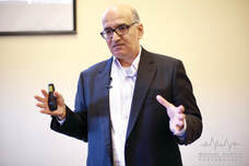 I am an author, speaker, career success coach. I guide people thrive on high stakes stage whether it's for a job interview, career advancement, a sales presentation or a high-stakes speech. I am the author of a practical book on speaking titled Winning Speech Moments: How to Achieve Your Objective with Anyone, Anytime, Anywhere. The main idea of the book is that if you want people to remember your speech and take action, you must create a winning speech moment. Please download the free speech checklist I created that I always use to create a winning speech for any occasion. Please contact me if you would like to thrive on high stakes stage. You can reach me at joza@winningspeechmoments.com or 732-847-9877. Note, if you are an author, executive, podcaster or very interesting to talk to and would like me to interview with five questions and then publish it as a blog post and promote it on LinkedIn, Twitter and Facebook, please contact me. 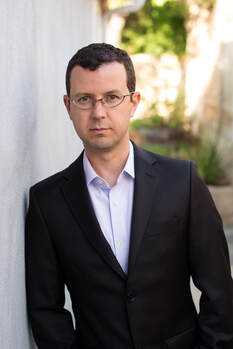 Thales Teixeira, co-founder of Decoupling and former professor at Harvard Business School. Thales Teixeira, co-founder of Decoupling and former professor at Harvard Business School. In business today, the one thing that is becoming certain is that either you will disrupt an incumbent in an industry or be a victim of disruption by an upstart sooner or later. This has been going on for a while. As Andrew Grove aptly put it with the title of his book, published in 1988, that "Only the Paranoid Survive." Today, if alive, Grove would probably title the revised edition of his book, "Only the Hyper Paranoid Thrive." The reason for this is that any incumbent can be disrupted faster than ever. Why is disruption happening so fast and often? Why is no one immune to being disrupted? I thought it was competition leveraging emerging technologies that disrupted different industries. After reading Professor Thales Teixeira's outstanding book, "Unlocking the Customer Value Chain: How decoupling drives consumer disruption," I have changed my mind. He convincingly argues that "new technology isn't driving disruptions today. Customers are." Innovation alone will not save them, but their ability to transform their business models will. Technology makes it faster for upstarts to disrupt an incumbent once the upstarts understand what activities consumers are ready to decouple in the value chain of consumption that incumbents are providing. The key concept that Professor Teixeira posits is that disruption occurs when an activity can be decoupled in the value chain of consumption. These are activities that the consumers are willing to look elsewhere to satisfy their needs and wants. To thrive today, both upstarts and incumbents must stay very close to consumers to see any signs of potential activity that they are looking to break from the value chain of consumption. Once any decoupling activity is identified, act fast. If you want to understand disruption in a refreshing way, you should get this book and study it. You will be much smarter than before in discussing disruption with business leaders. It will certainly enhance your image of being a thought leader. It may help you get ahead in your career since you will know what it takes to disrupt an incumbent or, if you work for an incumbent, see before others on ways to avoid being disrupted from upstarts. After reading the book, I had a lot of questions. Professor Teixeira was generous with his time to answer them, which I have posted below. I am spreading his ideas and message in this blog post. I thank Professor Teixeira for his generosity and time. What should you do to get familiar with Professor Teixeira's ideas of disruption?
Prof. Thales Teixeira is the co-founder of digital disruption consultancy Decoupling.co. Previously, he was the Associate Professor at Harvard Business School, where he taught for 10 years. There he has taught MBA, doctoral and executive-level courses in Marketing Models, Digital Marketing and Ecommerce. His two primary domains of research constitute Digital Disruption and The Economics of Attention. Five Questions Q: Why is it so difficult for incumbents to "decouple" the chain of consumption? Or is it that they are just paying attention to customers who are following their chain of consumption, so they don't see a potential threat to "decouple" the existing chain of consumption? Decoupling is the breaking of the links of the customer's value chain (CVC) by a digital disruptor that has been historically fully performed by incumbents companies. A recent industry that is under tremendous attack by startups performing decoupling is insurance, in all its forms. Traditionally, companies like AIG, Liberty Mutual, State Farm, and Ping An in China, have fulfilled most of the insurance shoppers' CVC. They educate customers, help them choose, sell them the policy, bill them monthly, service the policy, take and pay claims. Recently, digital startups have decided that they can better attract, educate and sell insurance to people, often using a web or mobile app environment. But interestingly, once they sell the insurance, they often pass on the customer to an incumbent insurance company to underwrite the policy and sometimes to service the policy, in effect pawning off the consumer to a traditional insurer. In doing so, startups like Lemonade, Ladder, Metromile, and Trov are in effect decoupling the insurers by "stealing" the activity of customer acquisition and sometimes customer service. In most cases, they do not create the insurance products, nor do they underwrite and handle claims. You might ask, "Why did AIG not do that themselves?" Well, I can never speak for one single company, but I have seen incumbents in manufacturing, retailing, banking, education, software, healthcare, fashion, and many other industries get decoupled. In the aggregate, what I have learned is that (a) established companies do too much and, as a consequence, cannot possibly do everything very well, and (b) established companies are too slow to adapt and change. Incumbents are like large nations. They can't be everywhere and be doing everything right. Things slip through the cracks, and their consumers get upset. Instead of quickly addressing the issue, employees of large companies take too much time or purely don't take enough interest in resolving customer pain points. So, when consumers' needs change, startups are the ones fast enough to identify them and build for those new customer needs. Going back to insurance, consumers—mostly millennials, but also other tech-savvy ones—wanted to avoid dealing with old-school insurance agents that are pushy and try to get you to buy expensive policies. These new consumers want convenience, self-service, and simplicity. That is what decouplers in insurance offer them. It has taken some time, but incumbents are now catching up. Q: Are there any examples you can cite where an incumbent was able to respond effectively to the "decoupling" threat posed by startups and how did the incumbent do it? Best Buy responded well to Amazon. Best Buy has taken a bite out of showrooming not by forcing customers to buy in-store, but rather by rebalancing its own revenue sources. Best Buy initially tried to prevent customers from showrooming (a retail form of decoupling). At first, they considered changing the barcodes on products to make them hard for shoppers to search for online. Best Buy even considered using signal jammers at their stores, like the ones they use to keep prison inmates from using cell phones. Eventually, Best Buy executives realized that Amazon and showrooming are not going away any time soon. They decided to charge manufacturers for putting those items on the shelf. When a company like Samsung puts TVs on display at Best Buy, Samsung is benefiting whether you buy it from Best Buy or Amazon. So Best Buy decided to charge for that value they create. This is what I call "preemptive decoupling" in my book. But this is extremely hard to pull off. The reality is that most incumbent companies have business models that are tightly coupled, and they need all the pieces to function together in unison to be viable. At Decoupling.co, my colleagues and I have been working with and advising companies such as Samsung, Microsoft, Hyundai, American Eagle, and many others to help them effectively respond to digital disruption and the rise of decoupling by redesigning and rebalancing their business models to be more sustainable and robust in a digital future. As in teh Best Buy case, technology is secondary. Q: Are there examples where a "decoupling" effort from startups did not succeed? Many. WeWork. Trov (the consumer app only) in insurance. One Kings Lane in furniture. Beepi in used car sales. Juicero in fruit juices. And the list goes on. The use of an innovative business model is no guarantee of success. In my research, I have identified two major causes of startup failure. First, and unsurprisingly, not acquiring enough customers is the major cause of death among startups. None of these startups that I just mentioned had this issue. But to varying degrees, they had the second one. Startups acquire enough customers as they create much value for them, but they cannot capture a sizable enough portion of said value in order to survive going forward. Monetization problems, value leakage, and limited value-capturing is the second most common reason for startup failure. My book provides a framework for detecting and "plugging in this hole." Q: Have you seen an incumbent decouple its own activities, and did it better than a startup that was trying to decouple the same activities in the chain of consumption? I am not aware of one single case and would love to get an example if any of your readers has one to share. It seems that, at least in terms of disruption by decoupling, the attackers are more motivated and apt at gaining market share than the defenders are at retaining their customers' activities. It's often a reactive process for incumbents. Q: You write about decoupling, but aren't many customers want things to be more coupled in the chain of consumption, so there is a one-stop-shop to simplify the chain of consumption? Yes, that is certainly right. I would love to have all my needs serviced by one big company instead of catering to multiple establishments. I would love to buy every food item I need at one grocery store, every news in one news media, every entertainment content with one streaming company, and every financial service with one single bank. Simplicity, convenience, lower transaction costs, are driving forces that influence the consumer into consolidation or integration. That is what I call integration forces, and they act on all of us by the urge of, as you say, "simplify the chain of consumption." Unfortunately, we also need variety, expertise, unique resources, and niche offerings. We consumers are also driven by these so-called specialized needs or "forces of specialization," as I have termed it in my book. The fact that a higher specialization force than an integration force acts on me during grocery shopping every time I go to Trader Joe's explains why, when I have time, I get my liquor in another store, or my pastries in a local bakery. The same phenomenon has made me have a bank account at Chase but have a brokerage account at Robinhood, a life insurance policy at Geico, and a stock price feed at Yahoo Finance. By offering me other benefits, in a very specialized manner, they induced me to decouple activities in my CVC that originally were fulfilled by JPMorgan Chase. Books that have influenced Professor Teixeira's thinking The Everything Store: Jeff Bezos and the Age of Amazon by Brad Stone. The Lean Startup: How Today's Entrepreneurs Use Continuous Innovation to Create Radically Successful Businesses by Eric Ries. Alibaba: The House that Jack Ma Built by Duncan Clark. The Innovator's Dilemma: When New Technologies Causes Great Firms to Fail by Clayton Christensen. ##### 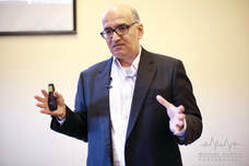 I am an author, speaker, executive coach. I guide people thrive on high stakes stage whether it's for a job interview, career advancement, a sales presentation or a high-stakes speech. I am the author of a practical book on speaking titled Winning Speech Moments: How to Achieve Your Objective with Anyone, Anytime, Anywhere. The main idea of the book is that if you want people to remember your speech and take action, you must create a winning speech moment. Please download the free speech checklist I created that I always use to create a winning speech for any occasion. Please contact me if you would like to thrive on high stakes stage. You can reach me at joza@winningspeechmoments.com or 732-847-9877. Note, if you are an author, executive, podcaster or very interesting to talk to and would like me to interview with five questions and then publish it as a blog post and promote it on LinkedIn, Twitter and Facebook, please contact me. 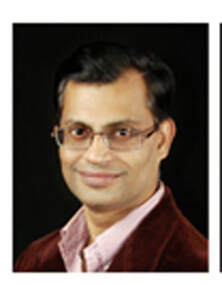 Dr. Umesh Rao Hodeghatta Dr. Umesh Rao Hodeghatta To succeed today, you have to get familiar with, and even master, artificial intelligence and machine learning. The companies that are thriving have mastered AI/ML. It has become table stakes very fast. Jim Cramer hosts a show on CNBC called "Mad Money" in the United States, that really should be called "Math Money." The reason for this is that he is constantly talking about companies like NVIDIA, Facebook, Amazon, and many others that have been making people mad money on Wall Street because of their mastery of data, math, and algorithms. They will continue to get bigger, cheaper, faster, better, and smarter because of their mastery of artificial intelligence and machine learning (AI/ML). AI/ML is making companies get bigger and people a lot of money. To better understand this difficult yet important subject, I came across an excellent article written by Dr. Umesh Hodeghatta titled "Challenges of Executing AI/Machine Learning Projects." The article lays out that there is a lot involved in successfully implementing AI/ML projects. Dr. Hodeghatta is a leading practitioner and thought leader in the field of AI/Machine Learning. He has authored two technical books: The Infosec Handbook: An Introduction to Information Security and Business Analytics Using R - A Practical Approach. He speaks about AI/ML at conferences all over the world. He has done over twenty webinars on BrightTALK. He has taught AI/ML at universities in both the United States and abroad. He is highly sought after for consulting by Fortune 500 companies. He is a co-founder of Nu-Sigma, an AI/ML solutions provider. So he is the right person to ask questions about AI/ML that many of you have, whether you work as an individual contributor or as a C-Level executive. Question 1 Can small companies take on AI projects? What is the approach you recommend they use? Yes, small companies can take on AI projects. Most of the small companies may have good quality data and may not know how to use it to drive some business problems. For example, a small solar light manufacturing company with 200-300 people may want to optimize its production line. They may have collected lots of data over a period and may have zeroed in on the bottleneck in their process. But they may not have an IT Technical team who are well versed with data, AI, or Machine Learning. Hence, they are not aware of how the data and AI can be applied to solve the problem in their process. It is not that we always require huge data for building models or running AI projects. It is the quality of data that matters in most cases. Some small companies may definitely have a good quality of data. Our recommendation to such small companies is to engage companies like NUSA Lab, who can help them deploy AI models to solve their business problems. If they do not have relevant data, we can work with them to collect such data required to train the AI model. Question 2 What do CEOs need to know before they embark on an AI/ML project so they can succeed? CEOs need to have the following information before they embark on an AI/ML project:
Understanding whether AI is a disruptive technology in your industry and how AI can be leveraged will be the critical skills for successful CEOs both now and in the future 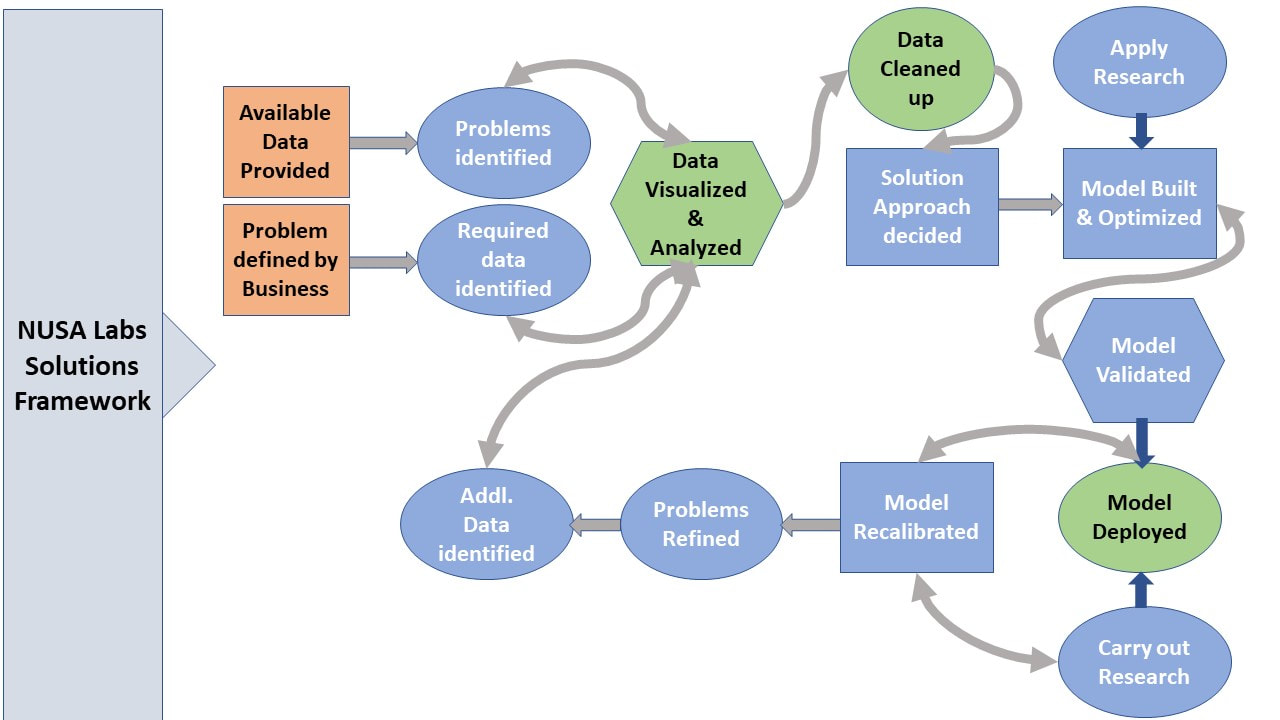 Question 3 What methodology is used in successful AI/ML projects? NUSA Lab (N-U Sigma U-Square Analytics Lab LLP) has developed a framework that is proven to be effective. Here is our framework: We start with the data and find out the patterns or problems/issues/challenges where data is available. Else, we start with the business problem/issue/challenge in discussion with the organization. In the second scenario, we suggest the data to be collected if available or partially available. We then analyze the data, understand the data, and clean up the data using various relevant methods. Once the cleaned data is available, we determine a suitable algorithm to be applied to the data to ensure generalized learning on the data. We build the AI/ML model, optimize it, and validate it. In this process, we apply relevant optimization methods until we get a highly accurate generalized model. We also apply any relevant recent research which adds value to the project. Then we deploy the model on to production and keep checking the output vs. the expected output. In the process, we carry out the research, and we use that research in recalibrating the model, as and where required. We then redeploy the recalibrated model needed to ensure that the model is still valid despite the changes happening in the ecosystem. In the current world, change is the only constant. Question 4 What skills do you need to implement an AI/ML project? The following are the skills typically required to implement an AI/ML project effectively:
Question 5 How do you know whether you have the right data and enough of it that will result in AI/ML success? By analyzing the data related to the problem to be solved, we can make out if the right data is collected and available. Normally, we guide the organizations as to what data is required based on the problem/issue being solved. Nowadays, most organizations have a good amount of data, as most of them have moved to digital platforms. However, the quantity of data is secondary. The quality of the data is the most important. There are various ways we can augment the available data. If the problem/issue/challenge makes business sense, and we have quality data, we can always proceed. The relevant data may also be many times possible to be sourced from third-party agencies. Bonus Questions Dr. Hodeghatta answered all the questions I sent to him, so I have included them under bonus questions. Question Can you explain supervised learning, unsupervised learning, and reinforcement learning? When would you use one over the other, and can you use all three with the data you have? We use "supervised learning" for predicting a category or a class given that the model is trained based on the data whose categories are already labeled. When we say labeled, somebody, either from their experience or other means, has already classified the record into specific classes. Regression, Classification are some of the areas where we use Supervised Learning. We use unsupervised learning when we do not know the categories/classes to predict. There is no labeled data to train the model. It is not possible to label them, either because of the lack of evidence or the high cost of labeling. The model itself will identify the data class by categorizing it based on some measure (normally distance measures). Clustering is one of the methods which are part of unsupervised learning. We use reinforcement learning, particularly in those scenarios where there is a reward involved and later steps depend upon the earlier steps. Question If a CEO needs to see something quick before providing more funding for an AI/Ml project, what do you suggest an approach CEO should take? Analyze the data and show the pattern or carry out a small dummy-proof of concept and show the possible value. Question How can a CEO determine whether a data scientist is any good? What kind of questions should he be asking to a data scientist he is talking to? The CEO should make out the following characteristics of an effective data scientist:
According to us, I have listed above not the conclusive and exhaustive list but some of the key requirements. Question Since you hear AI/ML everywhere, how can a CEO determine whether a problem lends to automation or machine learning? Automation is straight forward. You know the rules of the game already. You need to program those rules, test that the rules provide the output as required, and deploy the solution or application. In the case of AI/ML, the patterns or rules are not known. Rules are the one learned by the AI/ML models and are generalized so that the model works effectively on a wide range of applicable data values. Question Can you explain how to mitigate or even eliminate bias in machine learning models and AI systems? Is the problem mainly with the data or algorithms? When you try to mitigate bias, is it possible to overcorrect so that there is a different kind of bias? A good data scientist always tries to eliminate the AI/ML models' bias by understanding if the model has generalized well. She/he applies various types of validation over a wide range of possible data points using appropriate evaluation methods to validate that the model has generalized well. A well-generalized model is typically not biased. The experiment is the key to the success of a scientist. A data scientist shall not hesitate to experiment to understand that there is no bias. To do that ideally, she/he should not carry any pre- notions. A detailed webinar is conducted by Dr. Hodeghatta, Umesh, on December 16th, 2020 regarding the bias in AI/ML models. You can register to learn more about "Bias in AI": https://www.brighttalk.com/webinar/bias-in-ai-and-machine-learning-models/?utm_source=social&utm_medium=social&utm_term=data&utm_content=umesh&utm_campaign=Big Three Book Recommendations on AI/ML for CEOs Predictive Analytics: The Power to Predict Who Will Click, Buy, Lie, or Die by Eric Siegel Small Data: The Tiny Clues That Uncover Huge Trends by Martin Lindstrom Analytics in a Big Data World: The Essential Guide to Data Science and its Applications by Bart Baesens Dr. Umesh Rao Hodeghatta's Contact Info: WebSite: http://www.mytechnospeak.com/ Email: umesh@mytechnospeak.com LinkedIn: https://www.linkedin.com/in/uhrao/ I want to thank Dr. Hodeghatta for answering the questions about a very important subject that is changing our world. ##### 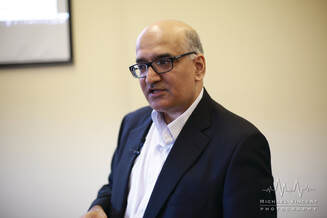 I am an author, speaker, executive coach. I guide people thrive on high stakes stage whether it's for a job interview, career advancement, a sales presentation or a high-stakes speech. I am the author of a practical book on speaking titled Winning Speech Moments: How to Achieve Your Objective with Anyone, Anytime, Anywhere. The main idea of the book is that if you want people to remember your speech and take action, you must create a winning speech moment. Please download the free speech checklist I created that I always use to create a winning speech for any occasion. Please contact me if you would like to discuss how you can work with me. If you are interested in inviting me to give a Zoom talk (during the pandemic) on job Interviewing. career development or high-stakes speaking, you can reach me at joza@winningspeechmoments.com or 732-847-9877. Note, if you are an author, content producer or interesting and would like me to interview with five questions and then publish it as a blog post and promote it on LinkedIn, Twitter and Facebook, please contact me. 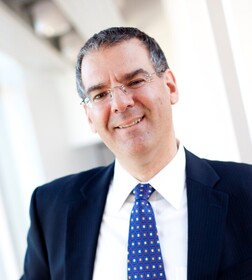 Ron Adner, Author of "The Wide Lens" and an award-winning professor of strategy at the Tuck School (Dartmouth) Ron Adner, Author of "The Wide Lens" and an award-winning professor of strategy at the Tuck School (Dartmouth) When you are innovating, you can do everything right and still fail. How is that possible? According to Ron Adner, he writes in his excellent book The Wide Lens that "your success depends not just on your ability to execute your own promises but also on whether a host of partners—some visible, some hidden—deliver on their promises too." Companies that innovate are adept at execution focus, such as gaining customer insights, building core competencies, and beating the competition. The pitfalls they run into are co-innovation risk and adoption risk. Co-innovation risk occurs when a company's innovation is dependent on the commercialization and affordability of other innovations. Adoption risk occurs when a company's innovation is dependent on partners' adoption of it so that end consumers can decide whether it satisfies their needs and their willingness to pay for it. After reading The Wide Lens, I had few questions for Ron Adner. I narrowed it to five questions whose answers are below: Five Questions Question 1: You point out how hard it is for companies to have innovation success. Do companies need to experiment with many innovations using the minimum viable ecosystem (MVE) approach to have a handful of successes? When companies innovate in ecosystems, their success depends on their ability to line up partners. The MVE is an approach to finding and organizing the starting coalition on the larger journey. Unlike an MVP approach, which is focused on discovery, and the MVE approach is focused on aligning – you need to have a good sense of where you are heading before approaching partners. If you don't, it will be hard to get them to commit at scale, and the risk is getting trapped in pilots. Question 2: Do you think China has changed the game when it comes to innovation? Is their approach different from the wide lens approach with the government playing an important role? Does their approach mitigate or even eliminate the co-innovation and adoption chain risks? Successful innovation in China, like everywhere else, depends critically on managing adoption chain risk and co-innovation risk. One difference in China is that the government can play a more active role in resolving these issues on both the regulatory and the incentive side. The Chinese approach is reminiscent of the role that Japan's Ministry of Industry and Trade (MITI) played in its rise through the 1970s and 80s. A second difference is one of context – China's rapid rise in prosperity interacts with what had been a challenged infrastructure to enable a fast path adoption. For example, where mobile payments in the West have to outcompete credit cards, in China the competition is cash in the absence of wide-spread credit cards. And when you combine that with the government wanting more traceable transactions, you can see why mobile payments would take off as quickly and penetrate as deeply as they have. These two differences in the Chinese approach are not a substitute for innovation, they allows innovations to scale and succeed faster. Question 3: Is innovation so complex today that only large companies like Apple, Amazon, Google, etc. can adopt the wide lens when it comes to innovation? If anything, innovation's complexity means that it is even MORE important for smaller firms to master the Wide Lens principles. The giants have the time and resources to take multiple shots on goal. We see them failing in many of their ecosystem ambitions (payments, health, mobility, all around, with shout-outs to Google showing how not to launch a game platform with Stadia, and Apple losing in the education market that gave them their start). There is plenty of room for innovation, and even ways to outcompete the giants, as long as you know how to change the game (this is the subject of my new book, Winning the Right Game, which will come out next year). Question 4: Do you think innovation success will ever be achieved by one company the way AT&T Bell Labs did by creating universal connectivity? Do you feel that companies will have to continue to overcome all three risks: Execution, Co-innovation, and Adoption Chain? Even the rise of the Bell network was the product of decades of ecosystem construction. Bell Labs was founded in 1876, so looking at Bell Labs in the 1970s is looking at the cutting-edge R&D lab of a long-established monopolist. Keep in mind too that Bell/AT&T did not capture the benefit of the vast majority of its inventions. Other innovators figured out not just execution at scale but also how to align the adoption chain and co-innovators that brought the inventions into mainstream reality… Everyone has to, or had to, deal with the Wide Lens issues. Question 5: As of this writing, Tesla's market capitalization is higher than GM and Ford combined. Can you briefly explain what made Tesla succeed in electric vehicle (EV) when Better Place could not? Market cap is variable, but the accomplishment is absolute. Telsa has succeeded in changing the game in EVs and – more impressively – in the automobile industry writ large. Better Place imploded because of an own-goal on execution and a clash of egos. There is a nice epilogue on their story posted at ronadner.com. Tesla's biggest disruption in my view is less EV per se (though that is huge) than the integration of software into so many parts of the car and the car network, which allows them to do unique things with upgrades, recalls, charging networks, acquiring autonomous driving data, etc. – an incredible achievement. In addition to Musk's innovative and strategic brilliance, he deserves credit for his ability to manage the finance side, bringing money forth from almost thin air. Bezos did this in the early days of Amazon, and that gave him the freedom to operate that he has used since. With Better Place, which had a strategy and model that I still think is superlative, the oxygen of capital simply ran out, and founder/CEO Agassi could not bring in the next critical tranche. It is a very disappointing end to what was a promising innovation. Bonus Question: Do you think Wall Street is more patient with charismatic CEOs like Jobs, Bezos, and Musk when they start making money with their innovation? Is charismatic leadership today a necessity for innovation success? Neither sufficient nor necessary, but it never hurts. : ) I want to thank Ron Adner for taking time out of his busy schedule to answer few questions I had about his book The Wide Lens. To learn more about Ron Adner: Book: The Wide Lens Web site at Dartmouth: Professor at Dartmouth Speeches: An Interview with Ron Adner re: The Wide Lens ##### 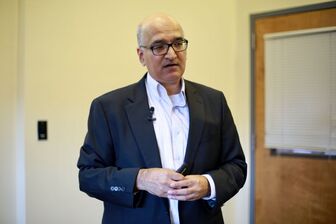 I am an author, speaker, executive coach. I guide people thrive on high stakes stage whether it's for a job interview, career advancement, a sales presentation or a high-stakes speech. I am the author of a practical book on speaking titled Winning Speech Moments: How to Achieve Your Objective with Anyone, Anytime, Anywhere. The main idea of the book is that if you want people to remember your speech and take action, you must create a winning speech moment. Please download the free speech checklist I created that I always use to create a winning speech for any occasion. Please contact me if you would like to discuss how you can work with me. If you are interested in inviting me to give a Zoom talk (during the pandemic) on job Interviewing. career development or high-stakes speaking, you can reach me at joza@winningspeechmoments.com or 732-847-9877. Note, if you are an author, content producer or interesting and would like me to interview with five questions and then publish it as a blog post and promote it on LinkedIn, Twitter and Facebook, please contact me. 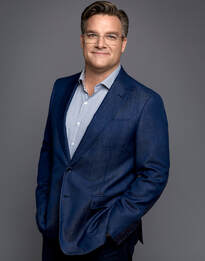 David Kidder - founder, investor, speaker, and author. David Kidder - founder, investor, speaker, and author. I recently read an excellent book by David Kidder and Christina Wallace, New to Big. It is one of the best books I have read on entrepreneurship, especially how you can bring an entrepreneur mindset into large companies to enable growth. It is a playbook for large companies to not only survive but thrive by becoming "ambidextrous." They have to become a New to Big machine to build new businesses to sustain growth. Once it becomes big, the core can take that nascent business from Big to Bigger, which is their forte. A company's success in becoming good at both New to Big and Big to Bigger rests on a CEO being ambidextrous. CEOs are experienced at Big to Bigger but not New to Big. Using a football metaphor, it is akin to having Tom Brady being great at QB on offense and also being an excellent safety on defense. But that is what is needed for large companies to remain relevant. Every company wants a high valuation from Wall Street, but they don't know how to do it. Kidder explains at a high-level how a company can do this and turn it into its core competency. You don't have a choice. Either you are going to change or become roadkill. What should you do if you want your company to grow by becoming a New to Big machine?
Start now since your competitors are already doing it. Good Luck! Question 1: It is hard for companies to become and remain a powerful Big to Bigger machine. Should large companies attempt to become a New to Big machine, or should they instead focus on their core competencies and acquire successful companies at New to Big?
Question 2: What is the main reason that prevents a large company from becoming a New to Big machine?
Question 3: You write in your book that the "success of New to Big sits squarely with the CEO." So don't you need a CEO with experience in New to Big to make it work?
Question 4: Briefly, what should startups need to do to become a Big to Bigger machine? Should they attempt to become Big to Bigger by going IPO or sell to a large company or a private equity firm?
Question 5: Isn't New to Big hard to succeed in large companies partly because you are trying to create this machine in an artificial environment? By this, I mean entrepreneurs make many sacrifices to create a market, including taking low compensation. How do you create that hunger and urgency in a New to Big initiative in large companies where they have an escape path to Big to Bigger?
Bonus Question: You mention about Day One mindset that Jeff Bezos uses to keep Amazon a well oiled New to Big machine. But isn't he rare in that he has mastered being ambidextrous? Isn't that his secret sauce in making Amazon one of the most valuable companies on Wall Street?
Attributes + Skills of Day One Mindset: Obsession over customer problems + needs (not tech) Capturing impact of outside forces (right, on-time) Rediscovery + leveraging of proprietary gifts Outside-in vs. Inside-out: bold growth portfolios driving truth Speed + cost: lean experimentation, productive failure Five books recommended by David Kidder to get a deeper understanding of being an entrepreneur:
I want to thank David Kidder (founder, investor, speaker, and author) and Rachel Jerome (Marketing Manager) for their help with this blog post. David Kidder's Books: New to Big: How Companies Can Create Like Entrepreneurs, Invest Like VCs, and Install a Permanent Operating System for Growth The Startup Playbook: Secrets of the Fastest-Growing Startups from Their Founding Entrepreneurs David Kidder's Linkedin Contact: https://www.linkedin.com/in/davidskidder/ David Kidder's Website: https://www.davidskidder.com/ Bionic Website: https://onbionic.com/ The Science of Success Podcast Would You Bet Your Life On It? How to be Certain with David Kidder ##### 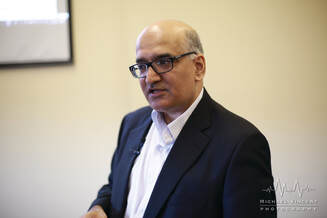 I am author, speaker, executive coach. I guide people thrive on high stakes stage whether it's for a job interview, career advancement, a sales presentation or a high-stakes speech. I am the author of a practical book on speaking titled Winning Speech Moments: How to Achieve Your Objective with Anyone, Anytime, Anywhere. The main idea of the book is that if you want people to remember your speech and take action, you must create a winning speech moment. Please download the free speech checklist I created that I always use to create a winning speech for any occasion. Please contact me if you would like to discuss how you can work with me. If you are interested in inviting me to give a Zoom talk (during the pandemic) on job Interviewing. career development or high-stakes speaking, you can reach me at joza@winningspeechmoments.com or 732-847-9877. Note, if you are an author, content producer or interesting and would like me to interview with five questions and then publish it as a blog post and promote it on LinkedIn, Twitter and Facebook, please contact me. We are often told that questions are more important than answers. This is because you can quickly get answers from so many places such as Siri, Google, Internet, Quora, LinkedIn, and other expert sources. Today, you can get answers to just about anything fast. If you want to succeed individually or organizationally, you have to become good at asking questions. Asking questions is good, but what is better is to ask bold, provocative questions that make people think. They are often not asked for fear of how others will react to them. But they must be asked if you want to come up with breakthrough ideas. If you want to think like an entrepreneur, solving customer needs that they may not even know they have, starts with a question. That's what entrepreneurs or those with an entrepreneurial mindset do. In his book New to Big by David Kidder, he writes that the idea of his company Bionic started when he asked a provocative question to GE's CEO, Jeff Immelt, at their annual conference in Boca Raton, FL. Here is the question David asked when he was part of a panel, and Jeff Immelt was sitting in the front row: "Jeff, how many fifty-million-dollar startups did GE launch last year? ... I bet the answer is zero ... And if that's true, I would be terrified if I were you. With ninety billion dollars in the bank and three hundred thousand employees, how does this not happen all the time?" Instead of David Kidder becoming a persona non grata at future GE events, he was surprised when Jeff Immelt said at the end of their annual conference: "That was the most important question in the history of this leadership conference." Suddenly, David realized that his idea of creating an entrepreneurial mindset within large companies had to be pursued as a business. Many large companies had to become good at New to Big (taking an idea from concept to growth business) rather than being just good at Big to Bigger (taking a growth business and scaling it). He and some of his team members he worked with at the startup Clickable that David had co-founded decided to start Bionic. Bionic's mission was to help bring entrepreneurial mindset within larger companies using Growth OS (methodology they created from their startup experience, so the large companies are not only Big to Bigger machine, which they do well, but New to Big machine too. Becoming a New to Big is not something companies can and should outsource. They have to learn to develop that core competency if they want to thrive in the digital world in which we live. Bionic went on to work with many companies, including Microsoft, P&G, Citigroup, Nike, Exelon, etc. The idea of starting Bionic would not have happened if David did not have the guts to ask that bold question in a high-stakes environment at GE's leadership conference. Sometimes the risky thing to do is to ask a question that many people are thinking about but not asking. If you want to have an entrepreneurial mindset, ask a provocative question as David Kidder did, and you can change the world for good. ##### 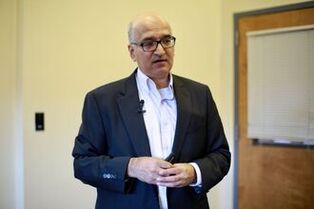 Jay Oza is an author, speaker, executive coach. He makes people thrive on high stakes stage whether it's for a job interview, a sales presentation or a high-stakes speech. He is the author of a practical book Winning Speech Moments: How to Achieve Your Objective with Anyone, Anytime, Anywhere. You can get this book on Amazon for $9.99 for a limited time. Please download the free speech checklist that you can use to help you create a winning speech for any situation. Please contact him if you would like to discuss how you can work with him even if you are budget constrained due to the pandemic. If you are interested in inviting him to give a Zoom talk on job Interviewing or high-stakes speaking, you can reach him at joza@winningspeechmoments.com.  Tesla Model 3 (taken from Wikipedia) Tesla Model 3 (taken from Wikipedia) Do we build products, services, or courses, and then find out after launching it that there are not enough paying customers to make it profitable? This is an "Oh sh*t" moment that many go through. Some will grudgingly accept failure and learn from it. Others will continue to plod along, hoping for a success. But the market is brutal. It is telling you that they don't like what you have to offer. By the time you figure it out, it will prove to be a very costly lesson in time, energy, money, and confidence. Alberto Savoia, author of "Right It," knows this well from his experience. He writes, "Most new products, services, businesses, and initiatives will fail soon after they are launched—regardless of how promising they sound, how much their developers commit to them, or how well they execute them." (You will also find my interview with Alberto Savoia in the blog post "Five Questions for Alberto Savoia: A Man on a Mission to Prevent Failures Among Entrepreneurs.") So how do you eliminate failures right from the get-go? You have to pretotype that Savoia popularized and writes about in his practical book. The idea of pretotyping applies to all of us, not just entrepreneurs. Why fail when you don't have to? All you have to do is pretotype, gather data, make a go-no-go decision. It's not that complicated. What is Pretotyping? Pretotyping is pretending you have a prototype of a product, service, or a workshop (in my example below) so you can find out whether customers are willing to pay. If customers are not willing to pay, you will fail. If you still decide to go forward, you will be taking a huge risk. Great customers are those who pay before you even have a product. You can think of pretotyping as similar to what they use in manufacturing called build to order. In the beginning, you are building a customized product, so you have to build based on customers' willingness to pay. And that is what you have to do when you are trying to get valuable information from customers. Tesla's Example of Pretotyping Before Tesla built their Model 3 car, they pretotyped the concept to gauge customers' interest in the car. They wanted customers to make a commitment by preordering it online by putting down $1,000 deposit. Over 115,000 put down $1,000 before even seeing the what the car would look like. That showed Tesla that they can now build the car since there is not just passing interest but people were expressing it with cold hard cash. It was time to build the car and they did. Not only did I not preorder the car, I did not see this as a sign to purchase Tesla stock. My Simple Example of Pretotyping Idea Have a one day workshop to teach people how to interview for a job. Generating Interest I gave a talk and asked people at the end how many would be interested in attending a paid workshop. Out of fifteen people who attended, I think close to ten raised their hands. So I thought I had customers. But raising a hand at a free talk costs one nothing. Test the Workshop Idea I sent an email with one-pager advertising the workshop and the agenda. I priced it at $299, which I thought was very reasonable and would accommodate up to ten people. I knew that I needed at the minimum five paid customers to make it work. Response from Customers I got only one response from someone who was ready to attend the workshop and was willing to send me the payment. Well one is better than none, but not sufficient to conduct a workshop, so I had to move to the back up plan if doing the workshop made no business sense. Back Up Plan I contacted the client and told him that the workshop idea will not prove very useful to him since clients have different backgrounds. Instead, I have decided to conduct two 75 minutes of one-on-one coaching sessions for the same price. In fact, this client was getting an excellent deal. He would now get two one-on-one coaching sessions for $299, which would have cost him $499. The client gladly took the two sessions and liked it so much that he has become one of my best clients. For now, I have dropped the plan to do a workshop for now. I may pretotype it again in the future before committing to it. Lesson Learned You have to pretotype to see if customers are willing to pay for your product, service, course, etc. If you don't get the numbers you need, you have to have a backup plan to take care of those who were ready to pay or already paid for it. You may lose a little, but it is better to lose a little by learning a valuable lesson than to lose a lot by not knowing whether you will get any customers. You have to fail very fast. So pretotyping is something we should all do before we build anything. It can be as simple as my conducting a workshop or building a product or service. You need some data to justify building a prototype. Without customer data, you will be flying blind and crash. Pretotyping is a simple way to mitigate failures. ##### 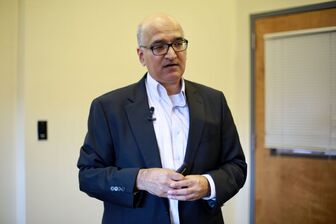 Jay Oza is an author, speaker, executive coach. He makes people thrive on high stakes stage whether it's for a job interview, a sales presentation or a high-stakes speech. He is the author of a practical book Winning Speech Moments: How to Achieve Your Objective with Anyone, Anytime, Anywhere. You can get this book on Amazon for $9.99 for a limited time. Please download the free speech checklist that you can use to help you create a winning speech for any situation. Please contact him if you would like to discuss how you can work with him even if you are budget constrained due to the pandemic. If you are interested in inviting him to give a Zoom talk on job Interviewing or high-stakes speaking, you can reach him at joza@winningspeechmoments.com. 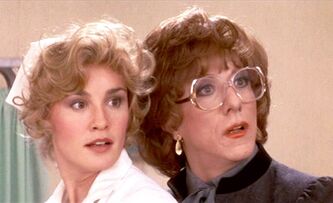 One of my favorite scenes from the movies comes from "Tootsie," which came out in 1982. The movie is about an out of work actor Michael Dorsey, played by Dustin Hoffman. Getting a job as an actor is difficult for him since he is very picky in his roles. He decides to take a risk by impersonating a woman, "Dorothy Michaels," to audition for a part as a hospital administrator in a soap opera "Southwest General." He gets the part, and his role as Emily Kimberly becomes very popular. While working there, Dorothy befriends the lead actress on the soap opera, Julie Nichols, played by Jessica Lange. Michael is attracted to Julie. When Julie invites Dorothy to her place, Julie, after having a few glasses of wine, tells Dorothy how frustrating it is when it comes to relationships. She confesses she would respect a man if he stopped all the BS and just came out and said: "Listen... I could lay a big line on you, we could do a lot of role-playing, but the simple truth is, I find you very interesting and I'd really like to make love with you." Upon hearing that, Dorothy, naturally, starts feeling hot. Later in the movie, Michael sees Julie at a party standing alone with a drink in her hand. He approaches her and lays the same pick-up line that Julie shared with Dorothy. Julie promptly empties her glass on Michael. Michael learned that what one says in private is BS, especially when one is little tipsy. Now I don't like to get a drink thrown at my face or worse, get punched, but that pick-up line can be repurposed to network with someone. Let's face it, we meet many people that we would like to network with that rarely gets off the ground. Why? It is a lot of work on both sides to network effectively. Networking just doesn't happen; you and the other person must make it happen for it to work. So here is the repurposed line from "Tootsie" on networking that I have come up with. You can tweak it and make it better and post it in the comment section of this post. Why can't we just stop all the BS and be direct and say: "Look, I would like to network with you. We can help each other out. Let's set up a call ASAP and get to work." Is it bold? Not really. Will it work? Yes, if someone sees a benefit in networking with me. Will this save me a lot of time? Absolutely. I don't want to network with people who don't know how to network. As you know well that the half-life of any networking is when you end the conversation. Most of my networking contacts are just that. I am mostly at fault since I have not paid much attention to networking and developed any strategy and action plan. Instead, I spend a lot of time mastering other things and not focusing on networking. If we want to succeed in anything, we have to focus on networking with a strategy and a plan. It starts with being direct and letting someone know that you take networking seriously. You and the other person have to get to work right away to make it work. ##### 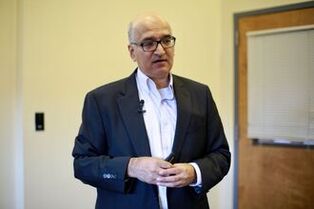 Jay Oza is an author, speaker, executive coach. He makes people thrive on high stakes stage whether it's for a job interview, a sales presentation or a high-stakes speech. He is the author of a practical book Winning Speech Moments: How to Achieve Your Objective with Anyone, Anytime, Anywhere. You can get this book on Amazon for $9.99 for a limited time. Please download the free speech checklist that you can use to help you create a winning speech for any situation. Please contact him if you would like to discuss how you can work with him even if you are budget constrained due to the pandemic. If you are interested in inviting him to give a Zoom talk on job Interviewing or high-stakes speaking, you can reach him at joza@winningspeechmoments.com. I watched the first 2020 presidential debate, and Trump did not do what he had to do as an incumbent president. He acted like he is still a long shot challenger and that was a big miss om his part. But he does have a chance to turn it around in the next two debates. Will he? Before I go into what he needs to do, here are the reasons why Trump did not do well: 1) Trump did not sound, look and act presidential This was the easy part, and he couldn't accomplish that. Ronald Reagan, George W. Bush, and Barack Obama all lost their first debate when they ran for re-election, but they all looked presidential. That allowed them to turn it around on second and third debates. Trump may have been angry that he had to be there, but he had to show respect for the position that George Washington and Abraham Lincoln held. He acted like a WWE wrestler at a presidential debate. 2) Trump did not do much counter-attacking Trump went on the attack right from the beginning. That is not what he had to do. He had to take punches and look for his spots in the debate and counter attack and walk away with a draw. That would have been a big win for him. Now he has to attack that will not make him look presidential and the format for the next debate is not conducive for attack style he displayed in the first debate. 3) Trump had to defend his record That may be the main reason why he stuck with his attack strategy. Unless he was willing to apologize for 7 million infections and over 200,000 deaths. Instead, he was blaming Joe Biden for what happened under his watch. He had to address his record head on rather than being defensive. 4) Trump did not give his vision for second term This is what he had to do, at the least, in the debate. He has no clue why he wants to remain president. What is he going to do that he has not done during his first term? 5) Trump could not change You are how you debate. Trump showed he does not follow the rules and thinks he can do anything he wants. Joe Biden didn't even have to say that. Trump did the selling for Biden. At the end, Biden outsold the greatest salesman the world has ever known without even being that good in the debate. Just think of that. Trump showed that he has no self-awareness and could not change. He was given ample of opportunity by the moderator and he wanted to blow up the debate and succeeded. Trump will struggle in the next two debate formats. He will have a hard time connecting with ordinary Americans in the next debate, a town hall format. Trump has a hard time being empathetic, which will be needed since he will have to look at the people who are asking questions. The third debate is about foreign policy. That is Joe Biden's expertise. Biden can go very deep. The bad news for Trump is that it is going to be the least-watched debate. Winning Strategy for Trump to Adopt in the Next Two Debates The biggest problem Trump has in 2020 election is that he won the 2016 election. He did everything to lose that election and carved out an electoral college win and lost the popular vote by close to 3 million votes. As we know that success is a bad teacher. He is doing everything again to lose the election, hoping that his base shows up and the Democrats will stay home. If that does not work, then create doubt and let the courts decide like they did in 2000. But a better strategy is to do well in the next two debates since he has such a low bar that if he just not make faces, maintains his composure and be polite to Joe Biden and the moderator, he will win. No one will care what he says. He must answer questions below rather than blame, obfuscate, or deflect. If he is going to take credit for things, then he must also accept the blame. He was the only president we had for the last four years. He must look like he is willing to live by the slogan that "Buck Stops Here." If he does not do that, the election will come down to---to put it bluntly---racist America vs. non-racist America. 1) What is his vision for the next four years regarding good jobs, health care, China, climate change, and deficit/debt? 2) Why the US has 4% of the world population but 20% of deaths? What went wrong? Why should we trust him that he can fix this? 3) Why is the country so divided over race and justice and how he plans to bring the country together 4) Why can't he release his tax returns to see if he has not committed fraud and who he owes money to? 5) How has his signature achievement, tax cuts, and trade deals, have helped ordinary Americans 6) Why should people believe that he cares about the Constitution, Democracy, Justice, Facts, and Decency? 7) Why is he the only modern president who has ever gotten asked by the media to denounce white supremacist groups? ##### 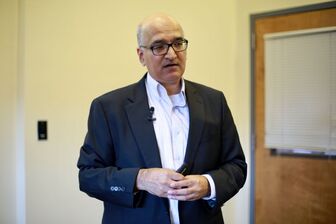 Jay Oza is an author, speaker, executive coach. He makes people thrive on high stakes stage whether it's for a job interview, a sales presentation or a high-stakes speech. He is the author of a practical book Winning Speech Moments: How to Achieve Your Objective with Anyone, Anytime, Anywhere. You can get this book on Amazon for 99 cents for a limited time. Please download the free speech checklist that you can use to help you create a winning speech for any situation. Please contact him if you would like to discuss how we can work together even if you are budget constrained due to the current economic situation. If you are interested in inviting him to give a Zoom talk on job Interviewing or high-stakes speaking. You can reach him at joza@winningspeechmoments.com. |
AuthorJay Oza Archives
July 2023
Categories
All
|
© 2017 Winning Speech Moments



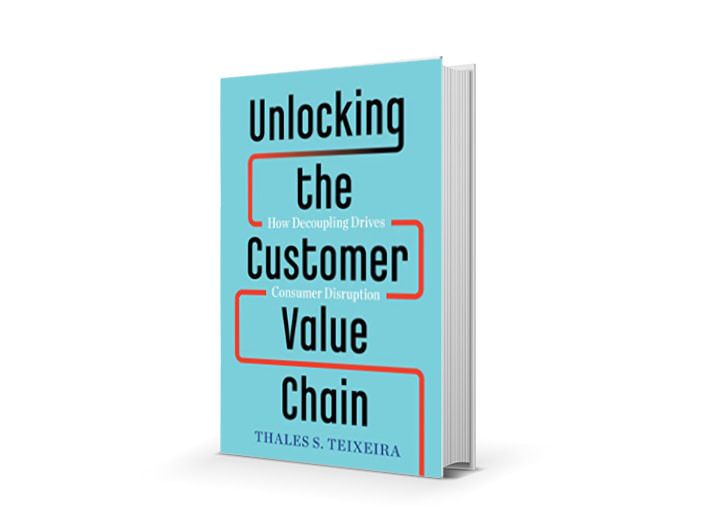
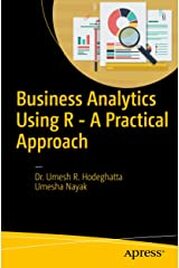
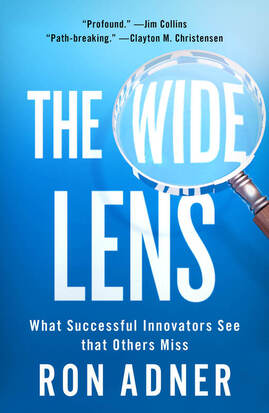
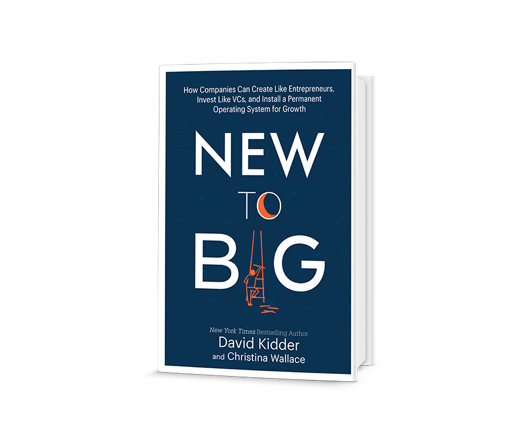
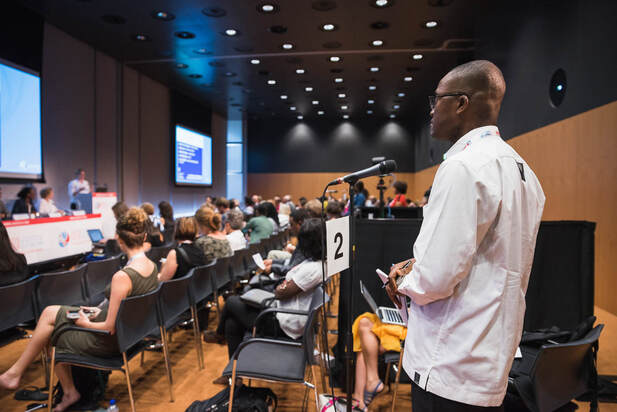


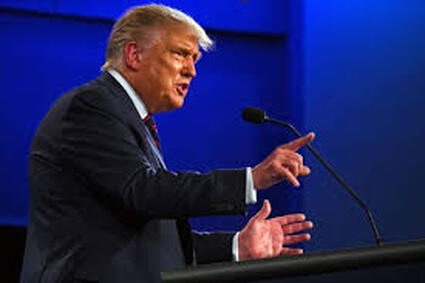
 RSS Feed
RSS Feed